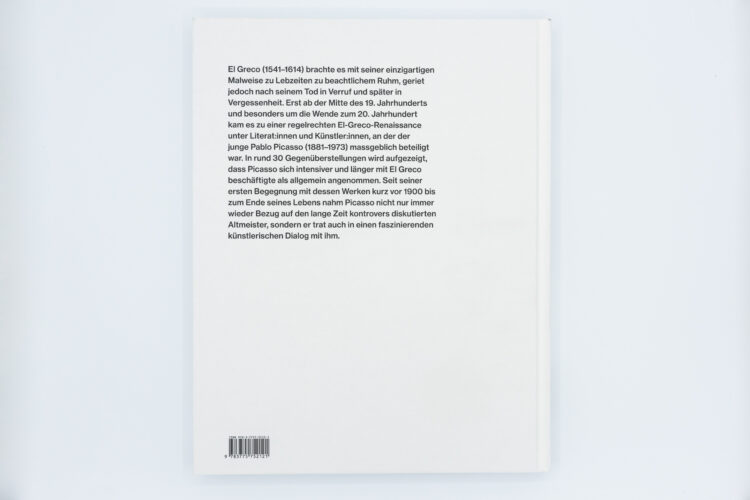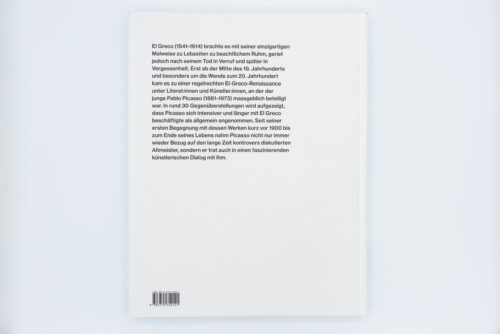








Picasso – El Greco
Some 40 carefully chosen juxtapositions of masterpieces by both artists trace a dialogue that ranks among the most fascinating in art history. This publication brings Pablo Picasso’s (1881-1973) encounter with the Cretan-born old master Doménikos Theotokópoulos, better known as El Greco (1541-1614), vividly to life. El Greco’s unmistakable painting style won him considerable fame in his day. Soon after his death, however, his work was largely forgotten. It was only around 1900 that an El Greco revival was launched, with Picasso serving on the front lines. His engagement with the Greek-Spanish master not only went far deeper than has previously been assumed but also lasted much longer. From his first encounter with El Greco’s works shortly before 1900 until the end of his life, Picasso not only referenced but engaged in a fascinating artistic dialogue with the old master.The KUNSTMUSEUM BASEL houses the oldest public art collection in the world. For the exhibition, curators Carmen Gimenez and Josef Helfenstein bring together prestigious loans from around the world with a core group of Picasso’s works from their own collection.
In his youth, Pablo Picasso (1881–1973) frequented the Prado Museum, rejecting a formal education in favor of studying the works of the old masters himself. El Greco (1541–1614) particularly captivated his attention, and his admiration soon bloomed into inspiration. Signature features of El Greco’s style were regenerated by Picasso’s reverent, if also subversive, hand. During his Blue Period (1901–04), the artist incorporated El Greco’s penchant for elongated figures, sober backgrounds and a touch of mysticism and mannerism; during his late career, he more explicitly embraced his fascination with the Spanish Golden Age, evoking El Greco’s palette of warm browns and ochers. Indeed, Picasso helped spearhead a resurgence of interest in El Greco, whose work—while acclaimed by his contemporaries in the 16th century for its undeniable ingenuity—was largely forgotten following his death, until the early 1900s. By engaging in a dialogue with his predecessor, Picasso established a point of historical continuity in his work—a grounding presence in the midst of his radical formal interventions.
This volume juxtaposes 40 masterpieces by the artists, underscoring the depth and longevity of this engagement.








- HATJE CANTZ
- Language German
- Release2022
- Pages192
- Format29.5 x 23.5 cm
- ISBN9783775752138









